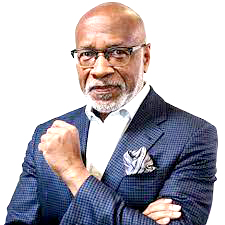By Michael Casey,
The Associated Press
With a bagpiper playing “The Bells of Dunblane” and a few runners looking on, families of those killed in the Boston Marathon bombing marked the 10th anniversary of the tragedy early April 15 by slowly walking together to the memorial sites near the finish line and laying wreaths.
Boston Mayor Michelle Wu, who was making her first run for City Council when the bombing happened, joined the somber procession along with Gov. Maura Healey. At each memorial site — marked with three stone pillars — they stood with the families in silence.
Thousands, including many marathon runners in their blue and yellow windbreakers and several former Boston Red Sox players, came out to a second ceremony later on April 15 near the finish line. Church bells were rung and the Boston City Singers and Boston Pops performed “Amazing Grace” and “America the Beautiful.”
The 127th running of the Boston Marathon takes place April 17.
“The day never leaves me,” said Jennifer Black, 71, a realtor from Loveland, Ohio, who was watching the morning procession and recounted how her race in 2013 was cut short due to the bombing and talked about those who died in the attack. She is back in Boston to run this year.
“So much loss, so much pain all because of hate,” she continued, tears streaming down her face. “We have to stand up for people. We have to look out for each other, and we have to pray for these families every day.”
Standing next to Black, Karen Russell, of Boston, said she felt it was important to witness the procession especially on the 10th anniversary.
“The families are still suffering even though we’ve gone on,” Russel said. “There are a lot of people that got hurt that day and that pain will never go away. … I feel it’s important to be here to let them know we still care.”
Three people were killed and more than 260 were injured when two pressure-cooker bombs went off at the marathon finish line. Among the dead were Lu Lingzi, a 23-year-old Boston University graduate student from China; Krystle Campbell, a 29-year-old restaurant manager from Medford, Massachusetts; and 8-year-old Martin Richard, who had gone to watch the marathon with his family.
During a tense, four-day manhunt that paralyzed the city, Massachusetts Institute of Technology Police Officer Sean Collier was shot dead in his car. Boston Police Officer Dennis Simmonds also died a year after he was wounded in a confrontation with the bombers.
Police captured a bloodied and wounded Dzhokhar Tsarnaev in the Boston suburb of Watertown, where he was hiding in a boat parked in a backyard, hours after his brother died. Tamerlan Tsarnaev, 26, had been in a gunfight with police and was run over by his brother as he fled.
“I think we’re all still living with those tragic days 10 years ago,” Bill Evans, the former Boston Police Commissioner, said recently.
Dzhokhar Tsarnaev was sentenced to death and much of the attention, in recent years, has been around his bid to avoid being executed.
A federal appeals court is considering Tsarnaev’s latest bid to avoid execution. A three-judge panel of the 1st U.S. Circuit Court of Appeals in Boston heard arguments in January in the 29-year-old’s case, but has yet to issue a ruling.
The appeals court initially threw out Tsarnaev’s death sentence in 2020, saying the trial judge did not adequately screen jurors for potential biases. But the U.S. Supreme Court revived it last year.
The 1st Circuit is now weighing whether other issues that weren’t considered by the Supreme Court require the death sentence to be tossed a second time. Among other things, Tsarnaev says the trial judge wrongly denied his challenge of two jurors who defense attorneys say lied during jury selection questioning.
The bombing not only unified Boston — “Boston Strong” became the city’s rallying cry — but inspired many in the running community and prompted scores of those impacted by the terror attack to run the marathon. At the memorial sites April 15 several flower pots with the words “Boston Strong” held what have become known as Marathon daffodils.
“It really galvanized and showed our sport’s and our city’s resiliency, our desire together to continue even better and to enhance the Boston Marathon,” Boston Athletic Association President and CEO Jack Fleming said. “The bombing in 2013 resulted in a new appreciation or a different appreciation for what Boston, what the Boston Marathon, has always stood for, which is that expression of freedom that you receive and get while running.”
On April 15, the focus was mostly on remembering victims and survivors of the bombing but also, as Wu said, “really making sure this was a moment to focus on where the city and our communities, our families are headed in the future.”
That sentiment will be reflected in what has become known as “One Boston Day,” where acts of kindness and service take place to honor victims, survivors and first responders. This year, nearly two dozen community service projects are happening including a shoe drive and several food drives, blood drives and neighborhood cleanups.
“This time of year evokes a strong emotion for so many of us across the City and the people touched by the tragedy ten years ago. But the most prevailing one is that Boston is indeed strong, and that our communities show up for each other in times of need,” Jacob Robinson, the executive director of West Roxbury Main Streets, one of the groups hosting the shoe drive, said in a statement.
___
AP Sports Writer Jimmy Golen contributed to this report.
The post Boston remembers deadly marathon bombing 10 years later appeared first on AFRO American Newspapers .










